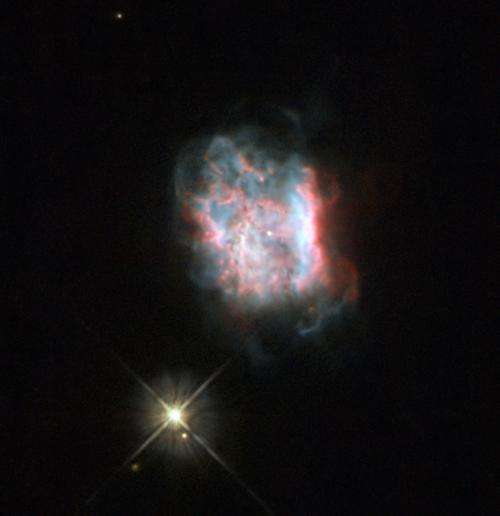Credit: ESA/Hubble and NASA
(Phys.org) —The object in this image is Jonckheere 900 or J 900, a planetary nebula—glowing shells of ionized gas pushed out by a dying star. Discovered in the early 1900s by astronomer Robert Jonckheere, the dusty nebula is small but fairly bright, with a relatively evenly spread central region surrounded by soft wispy edges.
Despite the clarity of this Hubble image, the two objects in the picture above can be confusing for observers. J 900's nearby companion, a faint star in the constellation of Gemini, often causes problems for observers because it is so close to the nebula—when observation conditions are bad, this star seems to merge into J 900, giving it an elongated appearance. Hubble's position above the Earth's atmosphere means that this is not an issue for the space telescope.
Astronomers have also mistakenly reported observations of a double star in place of these two objects, as the planetary nebula is quite small and compact.
J 900's central star is only just visible in this image, and is very faint—fainter than the nebula's neighbor. The nebula appears to display a bipolar structure, where there are two distinct lobes of material emanating from its center, enclosed by a bright oval disk.
Provided by NASA
























